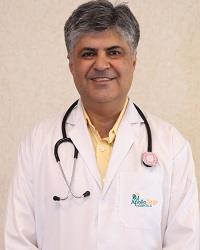Search Result: 5

Dr Dipjyoti Payeng
MBBS, MD, DNB (Neurology)
Registration No
6223197
Language
English, हिंदी

8 years experience overall

Paschim Boragaon , Guwahati
MON- SAT, MON- SAT(03:00 PM-05:00 PM)

Dr Lakshya Jyoti Basumatary
MBBS, MD, DM (Neurology)
Registration No
4329095
Language
English

22 years experience overall

Paschim Boragaon , Guwahati
MON- SAT, MON- SAT(11:30 AM-04:30 PM)

Dr Neelav Sarma
MD,DM
Registration No
3400642
Language
English, অসমিয়া, हिंदी

7 years experience overall

Guwahati , Guwahati
MON- SAT | MON, WED, THU(11:30 AM-01:30 PM | 04:00 PM-05:30 PM)

Dr Radhika Ranjan Das
MD,DM
Registration No
2020494
Language
English

27 years experience overall

Guwahati , Guwahati
MON- SAT(10:00 AM-01:00 PM)

Dr Satish Bawri
MBBS:MD(Medicine);DM(Neurology)
Registration No
1809856
Language
English, অসমিয়া, বাংলা, हिंदी

7 years experience overall

Guwahati , Guwahati
MON- SAT(11:00 AM-01:00 PM)
Frequently Asked Questions for Carotid endarterectomy in Guwahati
Dysphagia, or difficulty swallowing, can occur after a carotid endarterectomy due to injury or irritation to the nerves and muscles involved in swallowing. However, this is generally temporary and improves with time and proper post-operative care.
The decision to perform surgery for carotid artery blockage depends on individual factors, including symptoms and the risk of stroke. Generally, surgery may be recommended if the blockage is greater than 70% or if there is a history of TIAs or strokes.
Hyperperfusion syndrome is a rare complication that can occur after carotid endarterectomy. It is characterised by excess blood flow to the brain, leading to symptoms like headaches, seizures, and neurological deficits.
Bradycardia, or a slow heart rate, can occur during carotid endarterectomy due to manipulation of the carotid sinus area. However, this is usually temporary and resolves independently after the procedure.
During carotid endarterectomy, the vagus nerve may be temporarily blocked or stimulated to help monitor and protect the vocal cords and prevent damage during surgery.
During a carotid endarterectomy, the surgeon may need to temporarily clamp the common carotid artery and/or internal carotid artery to stop blood flow and safely remove plaque buildup.
The duration of a carotid endarterectomy procedure can vary based on the complexity of the case. On average, the surgery takes about 1 to 2 hours to complete.
The eligibility for carotid endarterectomy depends on various factors, including the degree of blockage, overall health, and individual risk factors. Your doctor will assess if you are a suitable candidate for the procedure.
After a carotid endarterectomy, you will be closely monitored in the hospital for a short period. You may be prescribed medication to help prevent blood clots and manage pain. Following your doctor’s instructions for wound care and attending follow-up appointments is essential.
The recovery time for carotid endarterectomy can vary based on individual factors like overall health and age. However, most patients are likely to stay in the hospital for one to two days after the procedure. Patients are seen to resume normal activities within a few weeks.
Before a carotid endarterectomy, you may need to undergo various tests to evaluate your overall health and assess the severity of the blockage. You may be asked to stop taking certain medications before the surgery and follow specific dietary instructions.
There are two types of carotid endarterectomy: conventional and eversion. In the conventional procedure, the plaque is removed, and the artery is repaired with stitches. In an eversion procedure, the artery is turned inside out, and the plaque is removed before it is sewn back together.
The success rate of carotid endarterectomy is generally high, with a low risk of complications. Studies have shown that the surgery can reduce the risk of stroke, especially for patients with prior transient ischemic attacks (TIAs) or strokes.
A vascular surgeon typically performs a carotid endarterectomy. Vascular surgeons specialise in treating conditions of the blood vessels, including those in the neck.
Carotid endarterectomy is a procedure aimed at removing plaque buildup from the carotid arteries. These arteries are the most important blood vessels in the neck. The procedure helps improve blood flow and reduce the risk of stroke.
Related Procedures in Guwahati
Related Treatments in Guwahati
- Doctors for Alzheimers Disease Treatment in Guwahati
- Doctors for Amyotrophic Lateral Sclerosis Treatment in Guwahati
- Doctors for Aneurysms Treatment in Guwahati
- Doctors for Aphasia Treatment in Guwahati
- Doctors for Bells Palsy Treatment in Guwahati
- Doctors for Benign Essential Blepharospasm Treatment in Guwahati
- Doctors for Dementia Treatment in Guwahati
- Doctors for Encephalopathy Treatment in Guwahati
- Doctors for Epilepsy Treatment in Guwahati
- Doctors for Erectile Dysfunction Treatment in Guwahati
- Doctors for Headache Treatment in Guwahati
- Doctors for Huntingtons Disease Treatment in Guwahati
- Doctors for Hydrocephalus Treatment in Guwahati
- Doctors for Hyperhidrosis Treatment in Guwahati
- Doctors for Mild cognitive impairment Treatment in Guwahati
- Doctors for Myasthenia Gravis Treatment in Guwahati
- Doctors for Narcolepsy Treatment in Guwahati
- Doctors for Nystagmus Treatment in Guwahati
- Doctors for Obstructive Sleep Apnea Treatment in Guwahati
- Doctors for Orthostatic Hypotension Treatment in Guwahati
- Doctors for Parkinsons Disease Treatment in Guwahati
- Doctors for Peripheral Neuropathy Treatment in Guwahati
- Doctors for Radiculopathy Treatment in Guwahati
- Doctors for Restless Legs Syndrome Treatment in Guwahati
- Doctors for Sarcoidosis Treatment in Guwahati
- Doctors for Sciatica Treatment in Guwahati
- Doctors for Spasticity Treatment in Guwahati
- Doctors for Stroke Treatment in Guwahati
- Doctors for Transient Ischemic Attack Treatment in Guwahati
- Doctors for Tourette Syndrome Treatment in Guwahati
- Doctors for Tremor Treatment in Guwahati
- Doctors for Trigeminal Neuralgia Treatment in Guwahati
- Doctors for Vertigo Treatment in Guwahati
Other Specialities in Guwahati
- Best Urologist in Guwahati
- Best Pulmonologist in Guwahati
- Best General Physician in Guwahati
- Best Endocrinologist in Guwahati
- Best Cardiologist in Guwahati
- Best Oncologist in Guwahati
- Best Radiologist in Guwahati
- Best Orthopedics in Guwahati
- Best Hepatologist in Guwahati
- Best Gynecologist in Guwahati
- Best Dermatologist in Guwahati
- Best Gastroenterologist in Guwahati
- Best Psychologist in Guwahati
- Best Ent Specialist in Guwahati
- Best Nephrologist in Guwahati
- Best Rheumatologist in Guwahati
- Best Diabetologist in Guwahati
- Best Psychiatrist in Guwahati
- Best Neonatologist in Guwahati
- Best Dentist in Guwahati
- Best Dietitian in Guwahati
- Best Haematologist in Guwahati
- Best Pediatrics in Guwahati
- Best General Surgeon in Guwahati
Top Hospitals in India
- Hospitals in Ahmedabad
- Hospitals in Bangalore
- Hospitals in Bhubaneswar
- Hospitals in Bilaspur
- Hospitals in Chennai
- Hospitals in Delhi
- Hospitals in Guwahati
- Hospitals in Hyderabad
- Hospitals in Indore
- Hospitals in Kolkata
- Hospitals in Madurai
- Hospitals in Mumbai
- Hospitals in Mysore
- Hospitals in Nashik
- Hospitals in Noida
- Hospitals in Visakhapatnam
- Hospitals in Lucknow
- Hospitals in Bhopal
- Hospitals in Karur
- Hospitals in Kochi
- Hospitals in Nellore
- Hospitals in Trichy
- Hospitals in Kakinada
© Copyright 2024. Apollo Hospitals Group. All Rights Reserved.




 Call Now
Call Now





